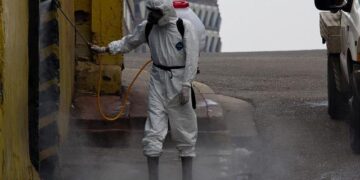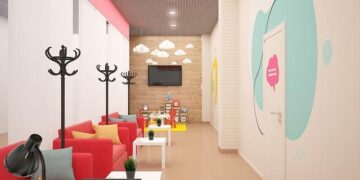In a landmark milestone for environmental management and nuclear safety, Governor Bob Ferguson joined officials from the Department of Ecology today to formally announce the successful vitrification of nuclear waste at the Hanford Site. This historic achievement marks the first time radioactive waste has been permanently immobilized in glass, a critical step toward reducing environmental risks and advancing cleanup efforts at one of the nation’s most complex nuclear reservation sites. The ceremony underscores a collaborative commitment to innovative solutions that protect public health and the environment in Washington State.
Governor Ferguson Praises Milestone in Nuclear Waste Cleanup at Hanford Site
Governor Bob Ferguson applauded a significant breakthrough at the Hanford Site, where nuclear waste has been successfully immobilized by turning it into glass through a cutting-edge vitrification process. This milestone marks a transformative step in the decades-long effort to safely manage and reduce the environmental risks posed by legacy radioactive materials in Washington State. The Governor highlighted the collaboration between state agencies, federal partners, and scientists, emphasizing the achievement as a testament to innovation and persistent commitment to public health and environmental stewardship.
Key benefits of this vitrification process include:
- Long-term containment: Glass immobilizes hazardous materials, preventing leakage into soil and groundwater.
- Reduced environmental impact: Transformation into glass curtails risks associated with storage tank waste.
- Advancement in cleanup technology: Sets a new standard for nuclear waste remediation nationwide.
| Process Stage | Milestone Achieved | Projected Impact |
|---|---|---|
| Waste Retrieval | Completed 75% | Enables vitrification feedstock |
| Vitrification | First batch glassified | Secure containment of toxins |
| Storage | On-site secure holding | Minimized environmental risk |
Ecological Benefits of Vitrification Technology Detailed by State Officials
State officials have highlighted numerous ecological advantages stemming from the groundbreaking vitrification technology at the Hanford Site, marking a pivotal transformation in nuclear waste management. By converting liquid radioactive waste into stable, inert glass, this method dramatically reduces the risk of soil and groundwater contamination, securing the surrounding ecosystems for decades to come. Experts emphasize that vitrification prevents the leaching of hazardous materials, thereby protecting the Columbia River’s delicate aquatic habitats and the wider biodiversity it supports.
Key ecological benefits identified include:
- Long-term containment: Glass solidification offers superior durability, minimizing environmental exposure over millennia.
- Reduced pollutant migration: This process curbs the spread of radioactive isotopes beyond the waste storage boundaries.
- Protection of natural resources: Safeguards soil quality and preserves endangered species in the region.
| Benefit | Environmental Impact | Duration |
|---|---|---|
| Containment Durability | Prevents leakage into soil and water | Thousands of years |
| Pollutant Immobilization | Stops migration of radioactive materials | Centuries to millennia |
| Habitat Preservation | Maintains biodiversity in sensitive areas | Ongoing |
Recommendations for Continued Support and Funding of Hanford Glassification Project
Securing ongoing investment in the Hanford Glassification Project is essential to sustaining the momentum behind this landmark nuclear waste remediation process. Continued funding will enable the expansion of vitrification capacity, ensuring more waste material is safely immobilized in glass, reducing environmental risks for generations to come. Stakeholders, including state and federal agencies, must prioritize budget allocations that reinforce infrastructure, workforce development, and operational excellence at the site.
Key actions to support this initiative include:
- Enhancing collaborative partnerships to streamline regulatory approvals and oversight
- Investing in advanced research to improve glassification technologies and waste throughput
- Promoting community engagement to build transparency and public trust
- Allocating contingency funds to address unforeseen technical challenges without project delays
| Priority Area | Recommended Action | Impact |
|---|---|---|
| Infrastructure | Upgrade vitrification facilities | Increase processing capacity by 25% |
| Workforce | Expand technical training programs | Enhance operational safety and efficiency |
| Research | Develop next-gen glass formulas | Improve durability and containment |
| Community | Host stakeholder forums | Strengthen public support |
Key Takeaways
The successful transformation of nuclear waste into stable glass at the Hanford Site marks a pivotal milestone in environmental management and public safety. Governor Bob Ferguson’s leadership, alongside dedicated ecological teams, underscores a committed effort toward addressing one of the nation’s most challenging legacy issues. As this groundbreaking process continues, it not only promises to mitigate long-term environmental risks but also sets a precedent for innovative waste management solutions nationwide. The achievement at Hanford offers renewed hope for communities impacted by nuclear contamination and reinforces Washington State’s role at the forefront of sustainable ecological stewardship.































